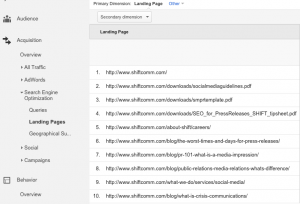In times of crisis, employees look to leaders for compassion and guidance, and leaders must be prepared to facilitate crisis management and recovery. Good leaders are sources of stability and confidence during a crisis; through them, employees see hope.
While no business leader will have every answer during every crisis, by examining tips for how to better support employees through various types of crises and evaluating ways to be more effective leaders in critical moments, employers and managers can better support their team members when problems arise.
7 Strategies For Leaders to Help an Employee in Crisis
Crises are inevitable. But how employers and managers choose to respond to employee emergencies is where strong leaders are made. Use these tips to set up your company and your employees for the best chance at weathering an emergency:
1. Have a clear chain of command in place.
Companies should have an established, accessible hierarchy of leadership and communication channels. Employees should know who oversees various areas of crisis management, as well as who they need to reach to for immediate or long-term assistance, resources, and services. If the chain of command needs to be adjusted to suit a specific crisis, leaders should notify staff of any changes to the regular order.
2. Stay visible and accessible to employees.
Employees need to see and hear from those in charge during a crisis. Leaders cannot retreat. They should be pillars of confidence and trust as well as empathy and support; they must bridge gaps between staff, departments, and internal and external resources, in addition to issuing frequent updates communicated openly when employees in crisis are desperate for answers and solutions.
3. Know what crisis resources are available.
Leaders should compile and monitor a bank of resources that can be deployed during a crisis. Resources should be monitored and edited as vendors, funds, company policies, staff, and partnerships change. In any case, leaders and their managers should know which crisis tools and services can be offered to employees, under what parameters those resources will be provided, and if any of them require pre-approval in emergency situations.
4. Listen before offering suggestions on specific forms of help.
Crises are not only traumatic but also potentially life-altering. In the midst of them, sometimes an employee’s primary need is for someone to listen to their pain and concerns. Before offering suggestions on specific forms of help, leaders should let employees drive conversations and tell their employers and managers about what will be most beneficial to them. As well-meaning as it seems on the surface, leaders suggesting a leave of absence, for example, could ultimately be more detrimental to the employee’s well-being. They could feel pushed out or unwanted when what they most want is to be surrounded by familiar connections with colleagues they trust.
5. Ask the right questions.
In tandem with listening, leaders should also ask the right questions to ensure an employee in crisis can receive the best support and resources available. Consider the following questions as part of a crisis management plan to assist employees in need:
- How can we help you in this moment?
- Do you have any immediate or pressing needs that have not been met?
- What is something we could provide that would be useful to your continued support?
- Have you received adequate updates, or would further information be valuable to you? If so, what questions or comments do you have?
- Do you have suggestions for ways we can improve our business, resources, or emergency policies going forward? We welcome your feedback and are eager to listen.
6. Be prepared to reduce employee workload.
This is the time to be pragmatic about what the employee in crisis can accomplish. Depending on the circumstances of the emergency, an employer or manager should be ready to set realistic interim productivity goals, adjust deadlines, and delegate employee assignments to others as needed.
7. Do not apply a universal approach to all crisis care.
When a widespread crisis occurs within an organization or multiple employees are affected by a disaster, some elements of emergency response (e.g. safety checks, paid leave, employer-provided replacement technology or equipment stipends, etc.) can be provided universally. However, employers and managers should be prepared, even in a companywide crisis, to implement tailored employee care responses that address individual needs respective to each employee’s lifestyle.
4 Critical Crisis Management Tips for Leaders to Keep in Mind
While leaders should do their utmost to support and guide employees in times of crisis, no leader is perfect. Leaders can improve their performance during emergencies, however, by employing a crisis management emphasis on leadership that puts order, competence, and employee well-being at the center of all actions and reactions. Here are four tips to practice:
1. Remain focused.
Remember that good leaders must be able to think quickly to prioritize and delegate tasks, appoint employees to emergency management and support roles, and effectively meet the needs of staff.
2. Exercise self-control.
To remain focused on the crisis and the response, leaders must exercise self-control. They cannot be disorganized and allow their own emotions and fears to govern choices that affect the wellness and livelihoods of their employees.
3. Employ a diverse team.
Diverse teams prosper in times of crisis. Varied perspectives and lived experiences offer unique approaches to crisis management and provide the greatest opportunities for all employees’ needs to be addressed and their views to be appreciated.
4. Adapt to the future.
Following a crisis, the business-employee relationship may be altered or entirely different from the one prior to the emergency. An employee who emerged from a crisis may require continued care or therapy, new workplace accessibility options or accommodations like remote work, a different position within the company, or may need to leave the company altogether. Leaders must be flexible and open-minded to successfully adapt to post-crisis realities.
The Bottom Line
With so many variables at play, no two employee crises will ever be the same. Life is dynamic, but the goal of assisting employees in crisis should remain constant in the minds and management plans of business leaders. Asking the right questions, employing effective crisis management strategies, and deploying the best crisis resources, tools, and services an organization can provide will reassure employees during hard times and make them proud to work for their employers during the good ones.
Business & Finance Articles on Business 2 Community
(46)






